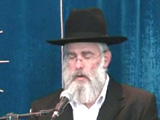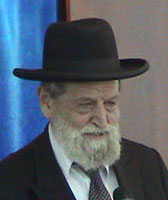Beit Midrash
- Sections
- Chemdat Yamim
- Parashat Hashavua
- Torah Portion and Tanach
- Shmot
- Beshalach
What is the significance of all of these places? The Ibn Ezra says simply that these are names of places that [happen to be] there. The Mechilta D’Rabbi Yishmael (Beshalach 1) shares with us the significance of these places. Chirot refers to the idol worship of the Egyptians. Between Migdol and the sea was the place of the greatness of Egypt, as their storehouses of precious metals were found there. Some say that these are hints at the events relating to Bnei Yisrael: they became bnei chorin (free men) at Pi Hachirot, and Migdol refers to the place that miracles were done for them (Midrash Aggada, Beshalach 14).
Some commentaries connect these places to other appearances of similar words in Tanach. Seder Olam Rabba (1) claims that Pi Hachirot was the new name of Pitom, one of the cities that the Israelite slaves built for Paroh (along with Rameses). The Land of Rameses was also the place where Yosef settled his father and family when they first came down to Egypt (Bereishit 47:1). The Mechilta says that this was also the place where Yosef gathered the gold and silver that he collected from selling the excess wheat. It was thus appropriate that Bnei Yisrael would take a major step toward receiving their due for their hard work and subjugation in that place. The Yerushalmi (Sanhedrin 10:1) posits that it was there that Korach uncovered the money that made him particularly wealthy.
The great wealth that Yosef accumulated during the years of famine had a part in the enslavement of the Jews in Egypt, as they were involved in building treasure houses for that wealth. On the other hand, the riches that Hashem promised to Avraham’s offspring when they would leave the land of their subjugation was partially fulfilled with money from Pi Hachirot. In yet another twist, the riches that came to Korach contributed to his feeling the confidence to challenge the authority of Moshe.
International commerce passed near Migdol (see Yirmiyahu 44:1), and the path nearby is called "the path of the Land of the Plishtim." This is also the route which must not be used in returning to live in Egypt (see Devarim 17:16).
Leaving Egypt includes the idea of extricating ourselves from the world of materialism, which Egypt represented. Even if the exposure to the materialism of Egypt can bring economic sufficiency, it is still not allowed. That is why Bnei Yisrael could not take the Migdol route and had to turn to the direction of the desert at that point (see Shemot 13:18).
May we merit seeing miracles like those at the time of the Exodus from Egypt (see Micha 7:15), and may material plenty serve to help us achieve spiritual emancipation.

Parashat Hashavua: “Kings Will Descend from You”
Rabbi Yossef Carmel | Kislev 5786

“These Are the Judgments”
Rabbi Yossef Carmel | 5774

Parashat Hashavua: The Symbolism of Mashiv Haruach U’morid Hageshem
Rabbi Yossef Carmel | Tishrei 5786






















